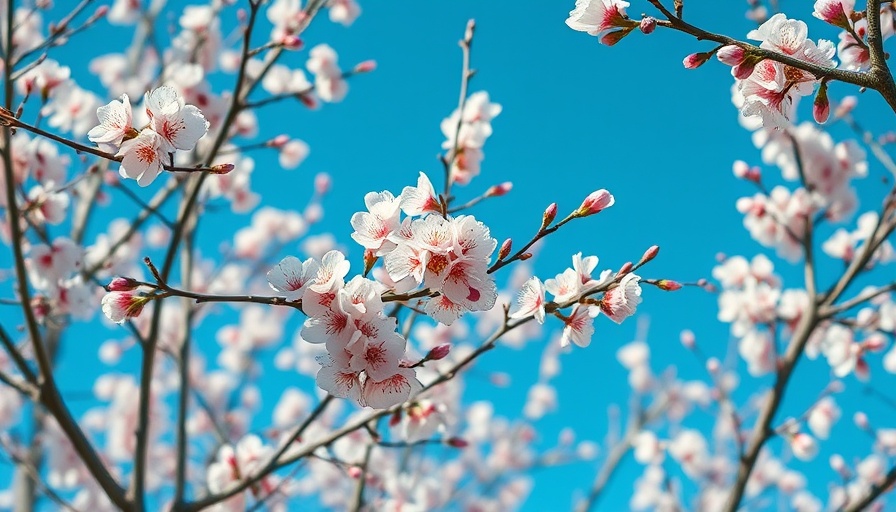
Discovering the Allure of Wintersweet: A Perfect Winter Addition to Your Garden
As the winter chill sets in, and many gardens fall into slumber, one remarkable shrub, Chimonanthus praecox, better known as wintersweet, stands out. Known for its exquisite scent, it offers a fragrant invitation even on the coldest days. This guide is tailored for eco-conscious homeowners and homesteaders who wish to create a sustainable landscape while enhancing their garden’s winter beauty.
Why Wintersweet is Essential for Eco-Friendly Landscaping
Wintersweet isn’t just about fragrance; it embodies several principles of eco-friendly gardening. First, it's low-maintenance, requiring minimal resources after establishment, which aligns perfectly with the ethos of zero-waste practices. Secondly, wintersweet serves an ecological function; its late-winter blooms provide vital nectar for early pollinators, supporting biodiversity in your garden ecosystem. Pair it with other native plants for a thriving, sustainable space.
Best Practices for Planting Wintersweet
Planting winter sweet requires careful consideration for optimal growth and fragrance. Choose a well-drained loamy soil and position the shrub in a warm, sheltered location such as against a south-facing wall. Its slow growth can take your patience, as it may take several years to bloom after planting, but the wait will be rewarded with an aromatic display that can uplift any winter day. Water regularly until established, embracing water conservation principles by ensuring mulch retains moisture.
Care and Maintenance for Longevity
Once wintersweet is established, its care is simple. A layer of organic mulch not only nurtures the soil but also contributes to your garden's ecosystem. Composting can enrich the mulch used around the base of the plant, reinforcing natural landscaping strategies that emphasize sustainability. Regular watering during dry spells ensures the shrub remains healthy, while responsibly sourced liquid fertilizers can boost growth during the active season.
Pruning Your Wintersweet for Optimal Growth
Pruning winter sweet is a critical step in maintaining its shape and vigor. Undertake pruning in early spring, right after flowering, to prevent disrupting next year’s blooms. Focus on removing dead or crossing branches to help the plant breathe and grow. This task not only enhances the aesthetic of the shrub but also supports its overall health—key in any sustainable gardening approach.
Dealing with Pests and Diseases: An Eco-Friendly Approach
Happily, wintersweet is generally free from pests and diseases. This resilience is a testament to its suitability for sustainable gardens. Implementing integrated pest management (IPM) strategies can help maintain plant health without resorting to harmful pesticides, contributing to a toxin-free home environment.
Wintersweet Varieties to Consider
Among the varieties of wintersweet available, Chimonanthus praecox 'Luteus' and 'Grandiflorus' are particularly popular. They not only enhance the winter landscape but also fuse utility, as their fragrant flowers are cherished in floral arrangements, promoting a connection to nature. Consider how these variants can be integrated into a diverse garden environment.
Frequently Asked Questions About Wintersweet
What does wintersweet smell like?
Its fragrance is often described as sweet and spicy, a scent that can fill an entire room with just a few stems when brought indoors.
When should I prune wintersweet?
Always prune after flowering in early spring to avoid losing future blooms.
Conclusion: Is Wintersweet Right for You?
As we embrace eco-friendly gardening, wintersweet offers practical benefits alongside its enchanting blooms. With minimal effort, this shrub can transform your winter landscape while supporting a sustainable lifestyle. Get started on your eco-conscious journey today, and breathe life into your winter garden.
 Add Row
Add Row  Add
Add 




Write A Comment